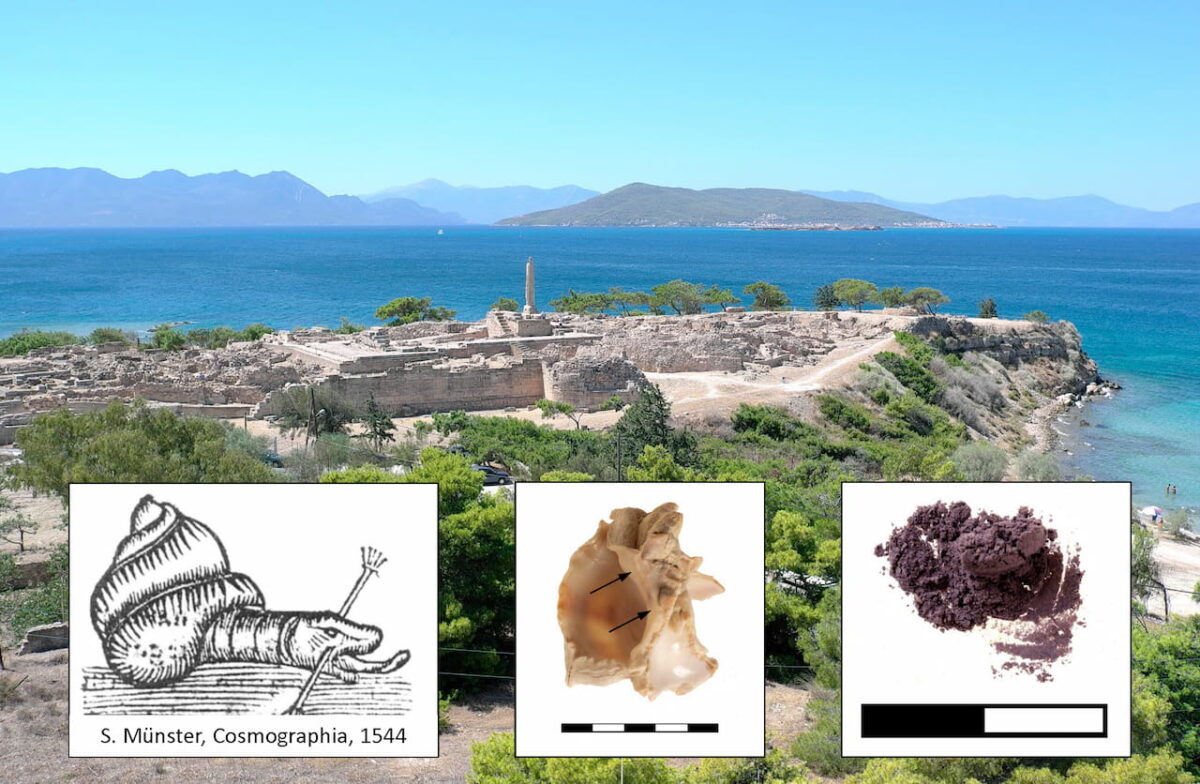An archaeological discovery on the Greek island of Aegina has unveiled a Mycenaean purple dye workshop from the Late Bronze Age, offering new insights into the ancient production of this valuable pigment. This significant find was reported in an open-access study in the journal PLOS ONE by Lydia Berger from the Paris Lodron University of Salzburg, Austria, and her colleagues.
During the Late Bronze Age, colored dyes were highly prized commodities in the Mediterranean region. Understanding the production methods of these dyes provides valuable context for interpreting the culture and trade practices of that era. In their study, Berger and her team describe a 16th-century BCE workshop located in the ancient settlement of Kolonna on Aegina, situated in the Saronic Gulf.
The presence of this dye workshop is supported by three main pieces of evidence: preserved purple pigment on ceramic fragments, dyeing tools such as grinding stones and a waste pit, and crushed seashells from marine snails used for the dye. These findings suggest a well-established production site.

Analysis of the seashells and the chemical composition of the pigments indicates that the workshop primarily used the Mediterranean sea snail species Hexaplex trunculus, also known as the banded dye-murex. This snail was a key source of the coveted purple pigment, which was highly esteemed in ancient times for its vibrant and long-lasting color.
The excavation also uncovered numerous charred bones of young mammals, predominantly piglets and lambs. The researchers propose that these remains might be from ritual sacrifices intended to protect the production site, a practice documented at other cultural sites. However, the exact relationship between these bones and the dye production process remains unclear.
This discovery provides crucial insights into the tools and techniques used in Mycenaean purple dye production.

Further research could shed light on the scale of dye production at Kolonna, the specific procedures employed, and the role of this dye in regional trade networks.
The study’s authors highlight the uniqueness of this find: For the first time, the discovery of notable amounts of well-preserved pigment, along with a large number of crushed mollusk shells and some functional installations, allows for a detailed view of purple dye production on the Greek island of Aegina approximately 3,600 years ago. Chemical analysis by HPLC, malacological, zoological, and archaeological studies illustrate the technical process and the peculiarities of early dye production, proving the existence of a workshop within the Late Bronze Age settlement.
The presence of such a workshop in Aegina hints at the island’s significant role in the dye trade and the broader economic landscape of the ancient Mediterranean.
Sources
Public Library of Science | Berger L, Forstenpointner G, Frühauf P, Kanz F (2024) More than just a color: Archaeological, analytical, and procedural aspects of Late Bronze Age purple-dye production at Cape Kolonna, Aegina. PLoS ONE 19(6): e0304340. doi.org/10.1371/journal.pone.0304340
Discover more from LBV Magazine English Edition
Subscribe to get the latest posts sent to your email.




















